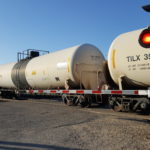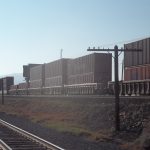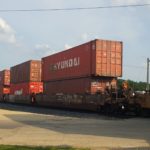The transport of a hazardous material can be accomplished by any one of four modes (rail, highway, air, or water) and by even more forms of a transport vehicle. If the mode of transport is rail, the transport vehicle used must be a rail car. But just what is a rail car?
Rail car is defined at 49 CFR 171.8:
Rail car means a car designed to carry freight or non-passenger personnel by rail, and includes a box car, flat car, gondola car, hopper car, tank car, and occupied caboose.
So, let’s break it down:
A rail car is designed to carry freight or non-passenger personnel by rail. This differentiates it from a passenger rail car.
A rail car includes, but is not limited to, the following:
- Box car
- Flat car
- Gondola car
- Hopper car
- Tank car. Read about the use of the this un-defined term in the USDOT/PHMSA Hazardous Materials Regulations: What is a tank car?
- Occupied caboose
|
Contact me with any questions you may have about the transportation of hazardous materials by air, highway, vessel, or rail International and Domestic Daniels Training Services, Inc. 815.821.1550 |
And that’s about it.
Q: Are any of these a rail car? (see images below)
- Each tank car is a separate transport vehicle
A: Yes. All of those images contain examples of a rail car.
Q: Well, is this a rail car?
A: Yes, but perhaps not in the way that you think. The large metal boxes are freight containers. They are being transported on a flat car which, as indicated by the definition, is a type of rail car.
|
Daniels Training Services, Inc. 815.821.1550 |





